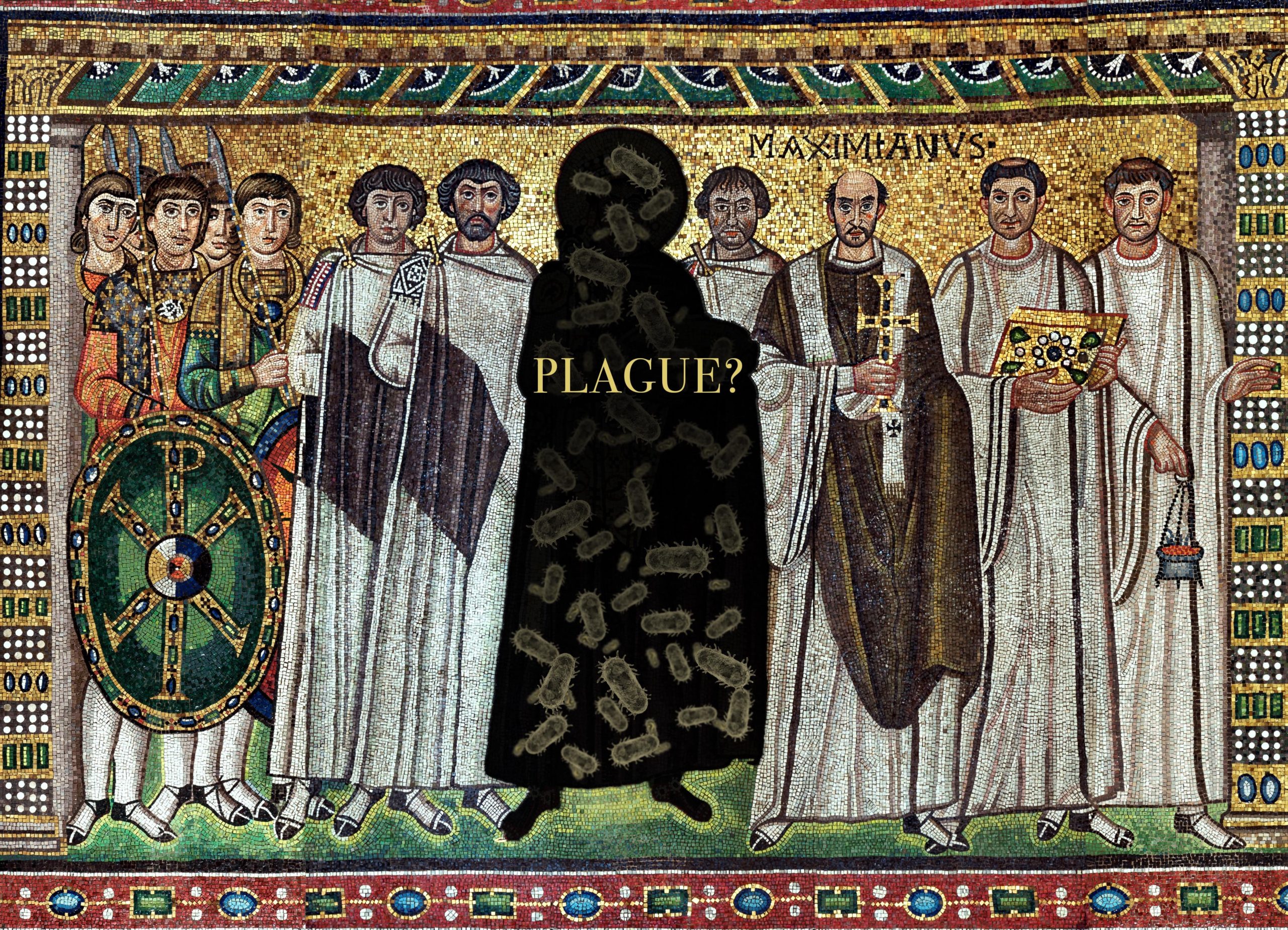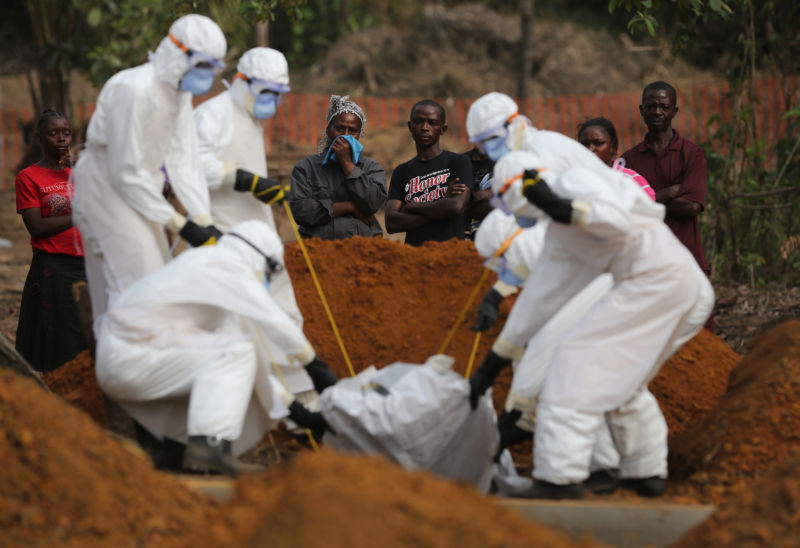Further Reading
The following sections summarize some of the major pandemics and provide references for further reading. We kept the recommendations to a few important publications to avoid overwhelming you with an endless list of readings. As much as possible, we tried to include readings that can be found online for free, which we link to below, or we offer links to various books available online. If they aren’t free, they can sometimes be found through the author’s personal website or academia.edu website where people tend to post copies of their work. If you still can’t find a copy and want one, please contact us (link) and we can pass along a copy if we have one.
Justinianic Plague (c. 541-750 CE)
Research on the Justinianic Plague has increased significantly in the last few decades. This plague pandemic has been portrayed as a
massive pandemic that killed tens of millions, brought down the Roman Empire, and led to the Islamic conquest of the Middle East (c. 630s CE) – although recent research has questioned this interpretation. We recommend reading the following four items if you want to know more:
- Kyle Harper has written a highly readable synthesis book The Fate of Rome, that depicts the Justinianic Plague as a watershed event in human history (Chapter 6 focuses on it). While we don’t agree with his conclusions, Harper is a trailblazing scholar and an engaging writer.
- Our own history article in the top-tier history journal Past & Present “Rejecting Catastrophe: the Case of the Justinianic Plague,” where we reexamined all the evidence from written sources to supposed mass burials to argue that the plague did not have a massive impact
- Our science article (that we wrote along with a few other specialist co-authors) in the prestigious Proceedings of the National
 Academy of Sciences (PNAS) entitled “The Justinianic Plague: an Inconsequential Pandemic? ” Here we looked at all types of evidence – from inscriptions and papyri to pollen and DNA for the plague’s demographic impact and found none.
Academy of Sciences (PNAS) entitled “The Justinianic Plague: an Inconsequential Pandemic? ” Here we looked at all types of evidence – from inscriptions and papyri to pollen and DNA for the plague’s demographic impact and found none. - Marcel Keller and co-authors published the most recent article on ancient DNA evidence for the bacterium Yersinia pestis entitled, “Ancient Yersinia pestis genomes from across Western Europe reveal early diversification during the First Pandemic” in 2019. Their work established the connections between different plague remains across western Europe at the time and significantly improved our understanding of the evolution of the bacterium.
Black Death (c. 1346-19th century)
 The Black Death is the most famous pandemic in human history. Full Stop. It may have killed up to 50% of the population of Europe in just the first 5 years (1346-1351 CE) and killed huge numbers of people across Eurasia as well. Outbreaks of this disease continued in Europe and the Mediterranean world for centuries, such as the famous London Plague of 1665 and the Marseille outbreak in 1720. This pandemic’s impact has shaped how people think about all other pandemics in human history.
The Black Death is the most famous pandemic in human history. Full Stop. It may have killed up to 50% of the population of Europe in just the first 5 years (1346-1351 CE) and killed huge numbers of people across Eurasia as well. Outbreaks of this disease continued in Europe and the Mediterranean world for centuries, such as the famous London Plague of 1665 and the Marseille outbreak in 1720. This pandemic’s impact has shaped how people think about all other pandemics in human history.
The literature on this pandemic is vast and continually expanding. We offer just a few key readings, but all of them have additional bibliographies.

- The edited volume Pandemic Disease in the Medieval World: Rethinking the Black Death has a number of articles on various aspects of the disease from science to history and across the geographical scope of the pandemic. It is available free online, so easy enough to get a hold of.
- Ole Benedictow’s book The Black Death, 1346-1353: the complete history remains the most comprehensive account of the Black Death in Europe with maps and numerous suggestions of what to read next.
- Rosemary Horrox, ed. and tr., The Black Death has a huge range of sources written by people who lived through the outbreak in the 14th century. It is the standard work if you want to read the experiences of the people who lived through the outbreak of plague.
- Kirsten Bos and co-authors wrote a key science article on the Black Death entitled, “A draft genome of Yersinia pestis from victims of the Black Death” in 2011. As with Keller’s article on the Justinianic Plague, this solidified what the bacterium that caused the Black Death was.
Spanish Flu/Influenza Pandemic of 1918

The 1918 Influenza pandemic is being compared most often to the COVID-19 pandemic, since both are flu like virus diseases and both spread globally over the course of a short time period. Deaths across the world from thos pandemic were in the tens of millions, but the true extent will probably never be known, since many countries did not keep track of their data.

There are two key differences between the 1918 Influenza and COVID-19. First, the disease in 1918 disproportionately struck young, healthy people while COVID-19 (at the moment) tends to strike the elderly and those with immune response problems. Second, even the sometimes problematic public health responses across the globe today are far better than what was available in 1918. Treatments 100 years ago consisted largely of what we would term self-care at home today: cover yourself with blankets, drink water, eat soup, and the like.
Interestingly, the Influenza of 1918 was almost entirely forgotten within just a few decades after its spread and, for much of the 20th century, was rarely discussed. We recommend reading:
- Alfred Crosby’s 1978 America’s forgotten pandemic the influenza of 1918 remains the key book on the subject, with new editions in the late 1980s and early 2000s. Crosby was the first historian to write a book on the subject
 and his analysis and framing are still the gold standard.
and his analysis and framing are still the gold standard. - John Barry wrote a popular book in 2004, The Great Influenza that traces out the turn of the 20th century the state of medicine and follows the pandemic across the United States and around the world. He is a lively writer, although it is a long book!
- If you are interested in the scholarship on the Influenza Pandemic, then Howard Phillips’s 2014 article “The Recent Wave of ‘Spanish’ Flu Historiography ” has you covered. He surveys the state of the field from a few years ago and offers guidance on new work
- For sources written at the time, the best resource is the Influenza Encyclopedia that is online from the University of Michigan. It has over 16,000 documents and photographs from across the U.S. that can be searched by people, places, organizations, and subjects. Definitely worth a read.
Ebola
 Ebola first emerged in central Africa in 1976 and has caused over 25 outbreaks in Africa, which continue to the present. Ebola takes a deadly toll, with high risk of death, up to 90%, in individuals who get it. There is no known treatment for Ebola, but it has almost entirely been contained to outbreaks in Africa.
Ebola first emerged in central Africa in 1976 and has caused over 25 outbreaks in Africa, which continue to the present. Ebola takes a deadly toll, with high risk of death, up to 90%, in individuals who get it. There is no known treatment for Ebola, but it has almost entirely been contained to outbreaks in Africa.
Ebola was important in American culture, since its emergence was the first devastating infectious disease to reach the U.S. (and global) media for decades and make an impression in American intellectual thought. (More on HIV/AIDS to come.) This was also the model for the fictional disease that was featured in the 1995 movie Outbreak, which shaped popular conceptions of pandemic.
Due to Ebola’s more recent history, there are fewer historical discussions of its impact.
- Richard Preston’s The Hot Zone is based on a 1989 incident that occured in Reston, Virginia that wiped out monkeys at a facility there. It is considered perhaps the most central book to push infectious diseases into the fore of Americ
 an thought.
an thought. - David Quammen’s Ebola: The Natural and Human History of a Deadly Disease is also a fast read written for abroad audience. It tracks the history of Ebola across the last 40 plus years and discusses its implications.